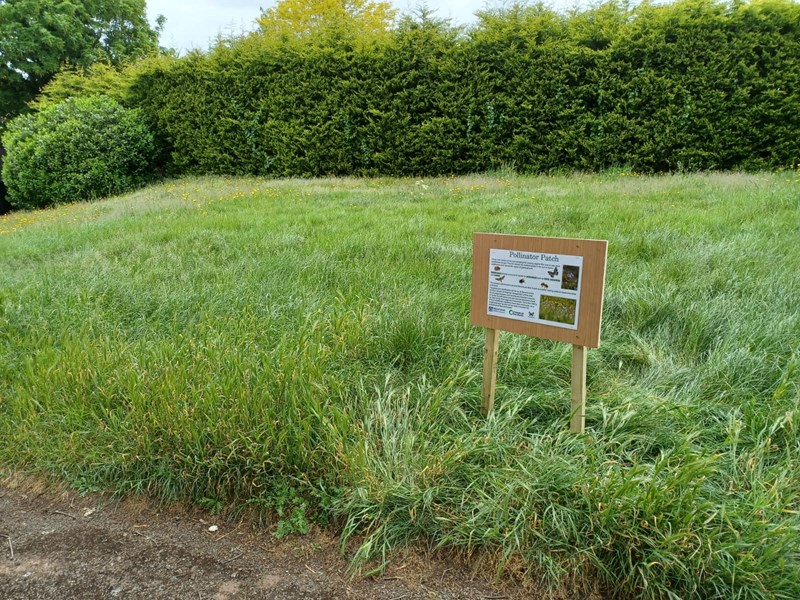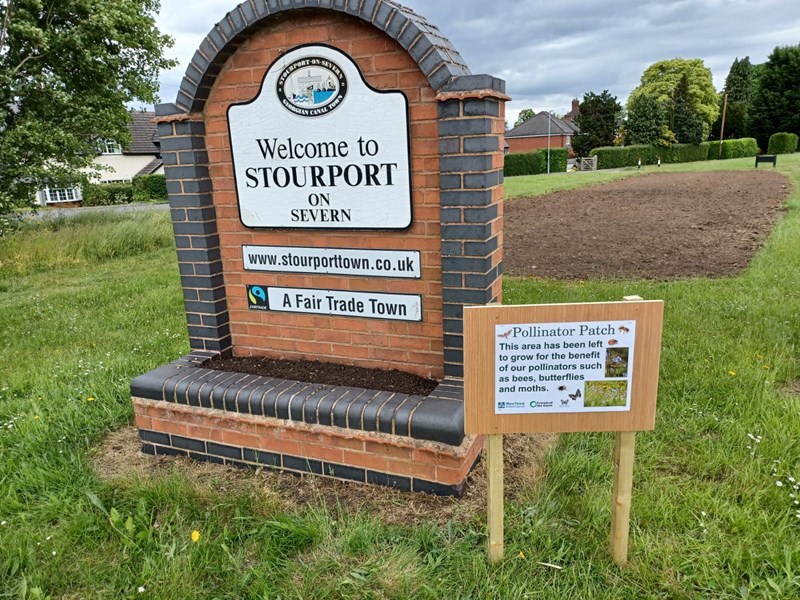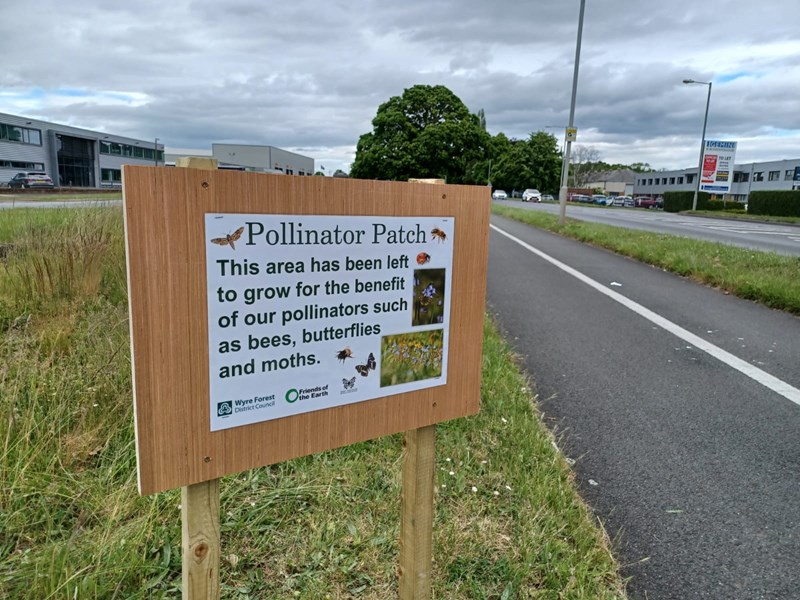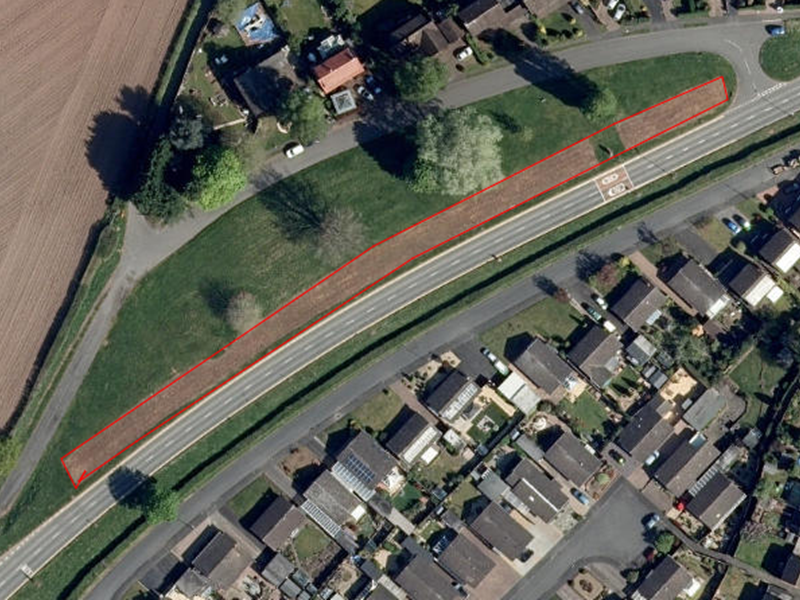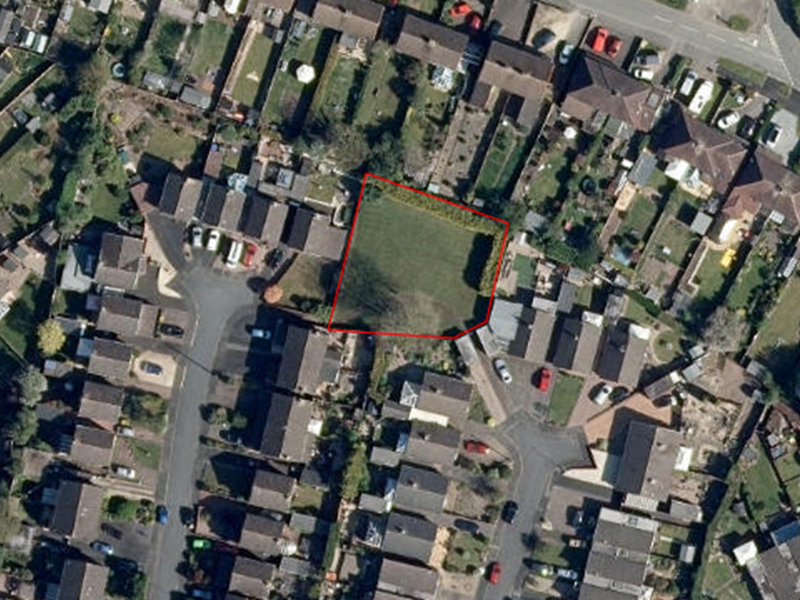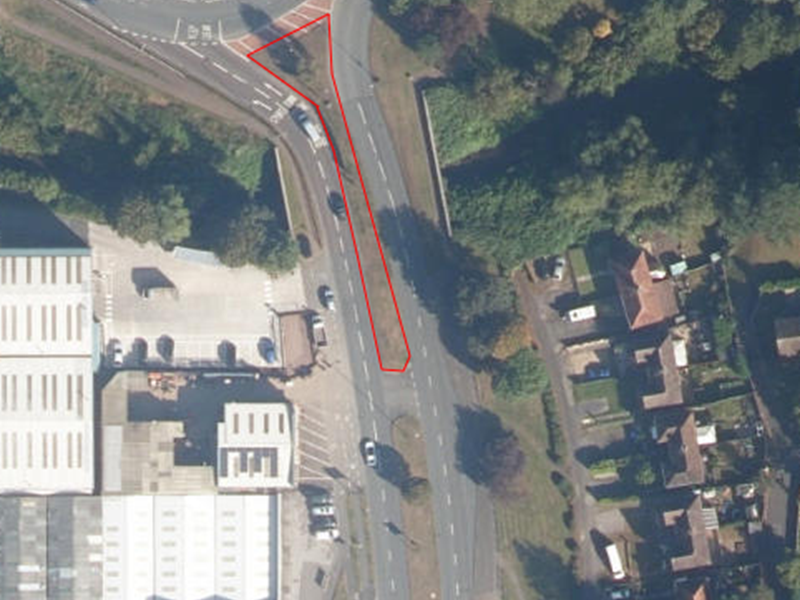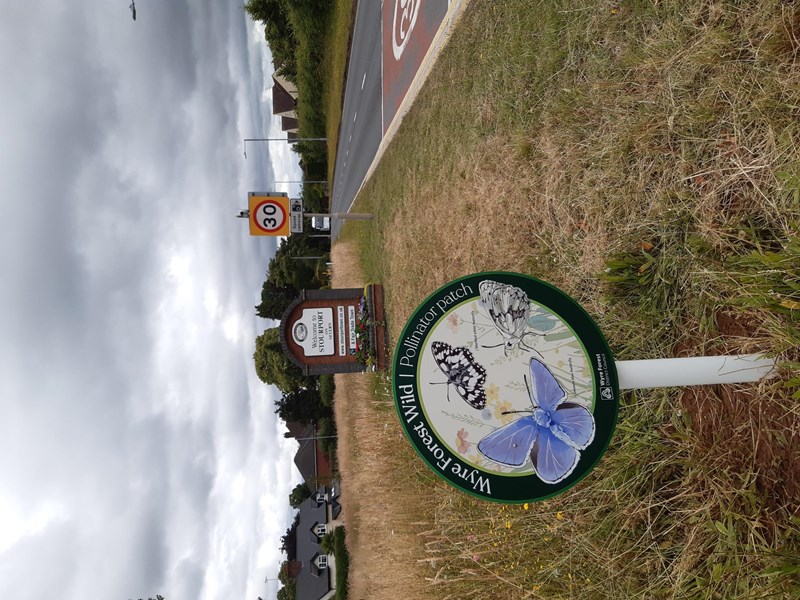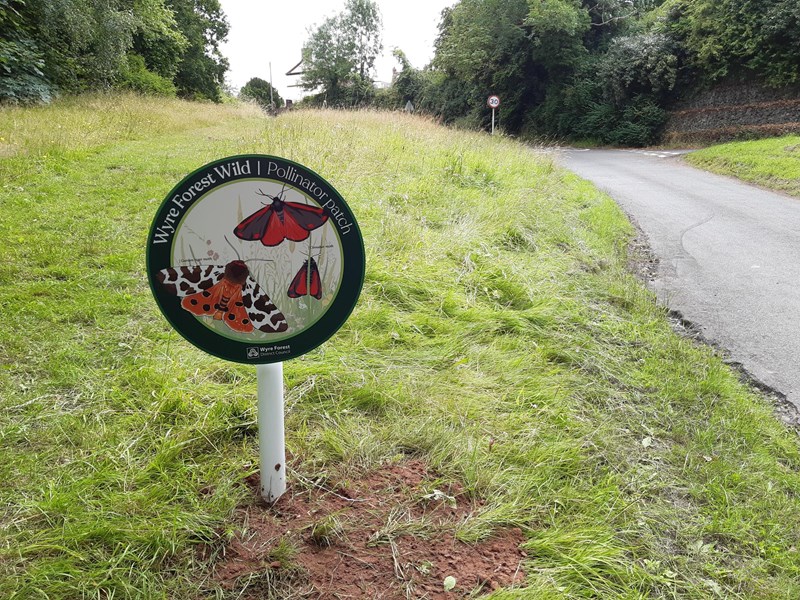Pollinator patch project
Wildflower meadows have declined nationally by over 95% since the 1930s having a huge knock-on effect upon our pollinators such as bees and butterflies.
Many of our districts Nature Reserves and Parks are already important resources for these insects but we feel that more can be done. By leaving some verges to flower this will greatly expand the area available for them and will hopefully act as ‘steppingstones’ allowing the insects and flowers to spread throughout the district. We are not seeding these areas but encouraging our locally native flora to thrive by altering the mowing regime. Of course, not all verges can be allowed to grow as it may reduce visibility, each area will be considered separately. If these trials are successful, we will hopefully be expanding the areas in future years around the district.
It is important that if we are leaving the areas uncut in the flowering season that we allow them to die back naturally. This allows the insect species that have used the verges for reproduction to complete their life cycles and prepare for winter while also allowing the flowers and grasses to set seed. Cutting them any earlier would cause more harm than good.
Pollinator patches
We introduced our pollinator patch project in 2022. The pollinator patches were chosen in conjunction with the Butterfly Conservation Trust and Friends of the Earth.
The project concentrates on 4 pollinator patches in the district.
- Dunley Road
- Stourport Road
- Lowe Lane
- Lingfield Road - an artificial habitat for bees will be created and monitored
We have learned much from the first year of pollinator patches. This year we want to expand our knowledge of the ways of creating pollinator patches; to further understand the impacts, benefits and costs of the creation of pollinator patches; continue to survey and evidence the species we find and make sure the patches are clearly identifiable from the surrounding area.
A pollinator patch needs just one cut annually. This has to be done with a specialist cut and collect mower and the cuttings have to be taken from the site. This cut will be late summer/early autumn depending on the seasonal conditions.
We want to repeat this in as many areas as we can next year and with the correct management the habitat will improve year on year. We will identify these areas with a symbol that will be launched along with our Wyre Forest Wild project.
Why are pollinator patches important?
Pollinators are one of the most important pieces of our biodiversity jigsaw. They are necessary to ensure our wildflowers and many crops can exist long into the future. This is essential not only for our environment but also for the mental wellbeing of our population. Nothing is more ‘English’ than wildflower meadows, or rolling fields of crops.
Pollinators come in all shapes and sizes, the most obvious and numerous being the bees, but alongside these are a variety of insect allies, such as butterflies; moths; beetles; hoverflies; bee-flies; wasps and bugs, that make play their part.
It is estimated (according to Buglife) that 80% of wildflowers and 84% of crops across the EU rely on insect pollinators. On top of this, these insects are part of the food chain, feeding birds, other insects such as Dragonflies and so on.
Beetles
 Many people are surprised to hear that in the UK around a quarter (that’s around 1,000 species) of beetles are pollinators. Some, such as the Longhorns or flower beetles specifically visit flowers to feed on the pollen and in doing so spread it flower to flower while others such as the Ladybird spread the pollen as they visit flowers to feed upon aphids.
Many people are surprised to hear that in the UK around a quarter (that’s around 1,000 species) of beetles are pollinators. Some, such as the Longhorns or flower beetles specifically visit flowers to feed on the pollen and in doing so spread it flower to flower while others such as the Ladybird spread the pollen as they visit flowers to feed upon aphids.
Thick-legged Flower Beetle – This is a bold vivid metallic green beetle but rather unusual looking with the swollen rear thighs of the male. It is often seen on flower rich grasslands and uncut verges. The beetles feed on the pollen of many different flowers and are often seen on oxeye daisy, thistles or cow parsley. The eggs are laid within plant stems where the larvae hatch and develop. For this reason, where possible small areas will be left completely uncut each year to allow the populations to grow.
Four-banded Longhorn Beetle – Longhorn beetles are a vast group with 20,000 plus species known across the world but only 60+ across the UK. This particular species is often associated with grasslands near to woodlands. While the adults feed on pollen and nectar the larvae are wood borers so verges near to woodland blocks are important to this species. The striking pattern of this species is excellent at warding off potential predators, allowing it to spend its time safely feeding on the hogweeds, cow parsley and thistles.
Moths
While moths in general are wonderful pollinators, we chose the garden Tiger and cinabar as they are ‘diurnal’ or day flying AND stunning insects so they are creatures we can all keep an eye out for.
The cinabar relies on ragwort for its larvae to feed and develop so the adults can often be seen on warm days investigating the bright yellow flowers, followed by the emergence of their black and yellow stripey larvae in early summer.
The garden tiger is often confused with being a butterfly due to its striking patterns and it can be found in a variety of open habitats. It deposits its eggs on a wide variety of food plants from common nettle to dock so plants that are often seen as ‘weeds’ are really important to this pollinator.
Butterflies
 While their caterpillar foodplants are usually quite specific, the adults tend to be a little more general and can often be seen visiting a variety of flowers and grasses. The common blue and marbled white are beautiful examples of this important group of pollinators, found across grassy habitats.
While their caterpillar foodplants are usually quite specific, the adults tend to be a little more general and can often be seen visiting a variety of flowers and grasses. The common blue and marbled white are beautiful examples of this important group of pollinators, found across grassy habitats.
The common blue can be seen nectaring on a variety of flowers, but it relies on plants such as white clover, lesser trefoil or birdsfoot trefoil as a larvae.
Marbled whites are a relative newcomer to our part of the country, having spread north over the last twenty years or so they are now a frequent sight on our meadows. While the adults in our area tend to be drawn towards thistles and knapweeds, the larvae are reliant on tall grasses as their food plant so allowing the grasses to mature is vital.
Allowing plants otherwise seen as weeds and tall grasses to grow within these verges is important to this group of insects.
Bees
Most of us are aware that bees are fantastic pollinators, but it is important to realise that in the UK alone we have around 270 different species of bee, with the social honey bee being only one. Some bees live in colonies (known as social bees) but the vast majority (240 of the 270 species) live a solitary life.
The tawney mining bee is one 68 species of solitary bees in the UK known as the Andrena’s. Unlike social bees, the females of this solitary species dig deep burrows into bare ground which they stock with pollen balls for their larvae. Solitary bees are often referred to as the ‘star’ pollinators. Their legs lack the pollen baskets of other bees, so they lose lots of pollen between visits meaning they have to visit many more flowers than other bees to collect enough to stock their larders. Solitary bees take advantage of areas where the turf has been scuffed off to dig their burrows, so occasional disturbance from mowers etc is great, however its important that these areas are then left undisturbed while the larvae develop. The Tawney mining bee is one of the earliest solitary bees to emerge in spring and often appears just as the apple/pear trees are in blossom. Along with fruit trees they are commonly seen on dandelions as they are one of the first flowers of spring.
The buff Tailed bumblebee is one of 25 species of bumblebee. They live in large colonies with one queen, female workers and males. Interestingly they have a relatively short ‘tongue’ and so favours foraging for pollen in short, ‘open’ flowering plants like comfrey, many of our crops also make up this type of flower so they are seen as important pollinators of crops. However, if these plants are in short supply, it is not unusual for them to chew a hole near the base of a tubular flower such as foxgloves to ‘steal’ the pollen.

